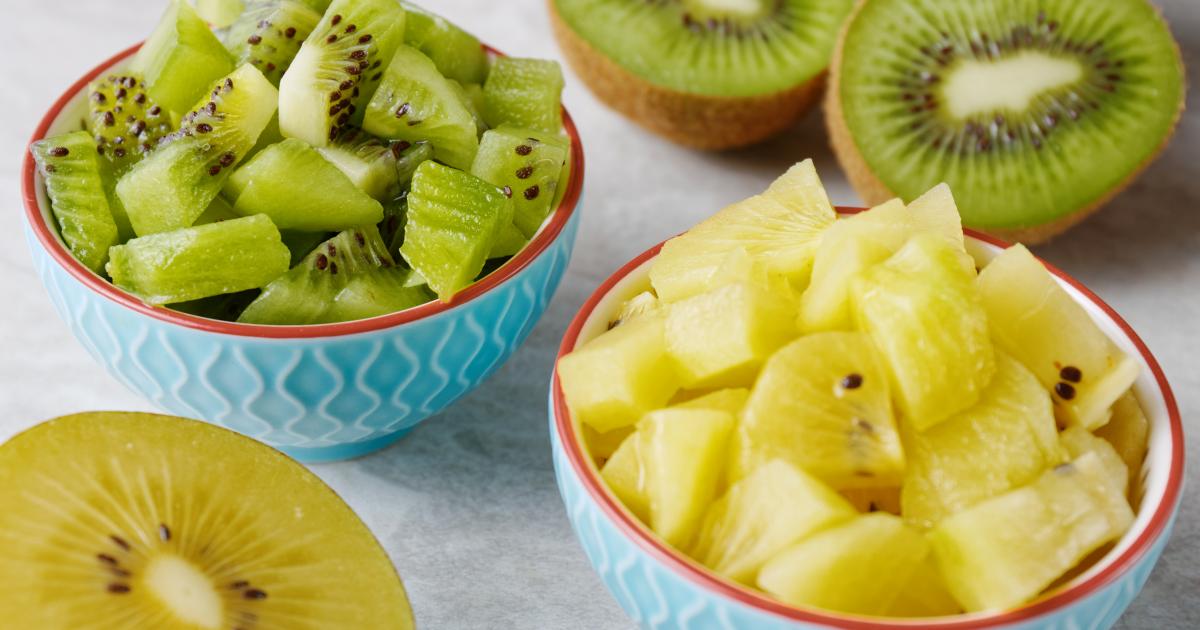
Suggested video What products are in season in November?
Video 1 of 2
Kiwi is one of our favorite fruits in winter! If we know the classic green well, new varieties have appeared in recent years. There is the gold or yellow kiwi with its sweeter taste and now the red kiwi, still rare, but which is starting to establish itself in the stalls. Do all three varieties have the same nutritional benefits? Decryption.
Native to central and eastern China, the kiwi has been around for hundreds of years. It is then called “yang tao”. The kiwi remained a fruit unknown to the rest of the world until the middle of the 18th century, when a French Jesuit passionate about botany, Pierre Nicolas Le Chéron d’Incarville, brought back plants from his trip to Europe. At the end of the 19th century, a few plants became acclimatized in European botanical gardens, but this plant was still considered decorative.
The true modern variety of kiwi, as we know it, has come into existence in the early 1900s. When the kiwi arrived in its new country, New Zealanders nicknamed it “Chinese gooseberry”, because its taste and appearance were similar to gooseberries. The fruit’s hairy skin also reminded them of the kiwi bird. VSIt was at the end of the 1950s that advertisers decided to rename it “kiwi” because its Chinese name was too difficult to pronounce. They chose this name because the hairy skin of the fruit reminded them of that of the kiwi bird.
Today, France is the third kiwifruit producing country after Greece and Italy in Europe, well behind China and New Zealand. It is mainly cultivated in New Aquitaine and Occitanie. There is even a kiwi which has a PGI, that of Adour.
The yellow or gold kiwi is distinguished by the color of its flesh, its soft, hairless skin and its sweeter taste, but not only. He is appreciated for its high vitamin C content, much higher than that of green kiwi. For comparison, it contains as much as in three oranges. It is therefore particularly interesting for strengthening the immune system, especially as winter approaches. The yellow kiwi is also rich in antioxidant vitamin E et in vitamin K which contributes to blood clotting.
But green kiwi also has many health benefits. It is less sweet and also remains rich in vitamin C. It is also very interesting for people with sluggish intestines because green kiwis have the highest levels of actinidin, an enzyme that improves digestion protein and helps fight bloating.
Both therefore have advantages, so it is interesting to vary them as part of a balanced diet.
Unlike green and yellow kiwis, red kiwis are still discreet on French shelves. This variety, originally from China, acclimatizes very well to the European climate and particularly to that of Italy, where it is mainly produced. In France, its culture is still confidential. In the chair is yellow with a garnet red in the center. Its aroma is unique with peach flavors and a heart of red fruits not found in other varieties. It is very rich in vitamin C like gold, and it contains 3 times more vitamin B1 than a banana. On the other hand, in terms of price, it is generally sold more expensive than the yellow kiwi.
Source:https://www.750g.com/jaune-vert-et-meme-rouge-quelles-sont-les-differences-entre-ces-kiwis-a35581.htm


